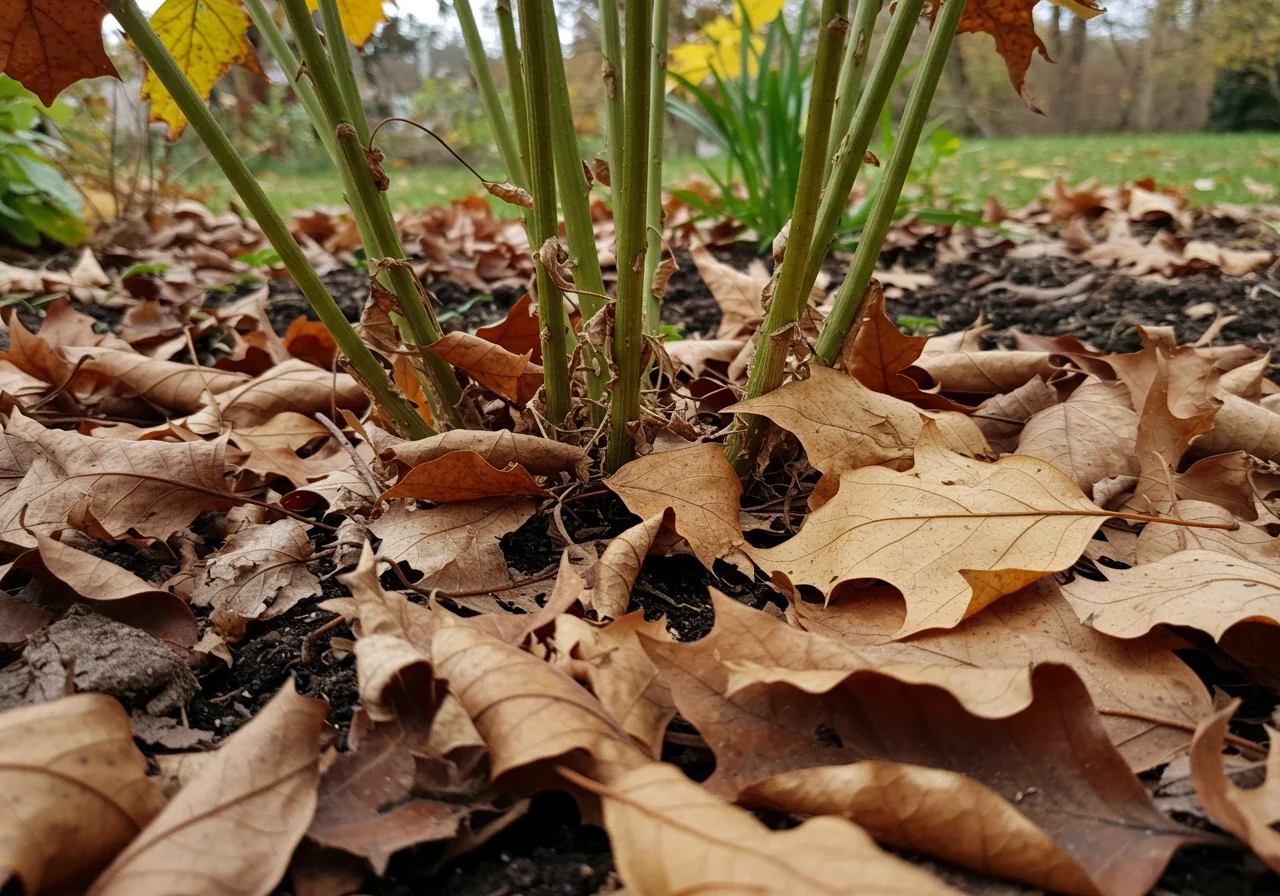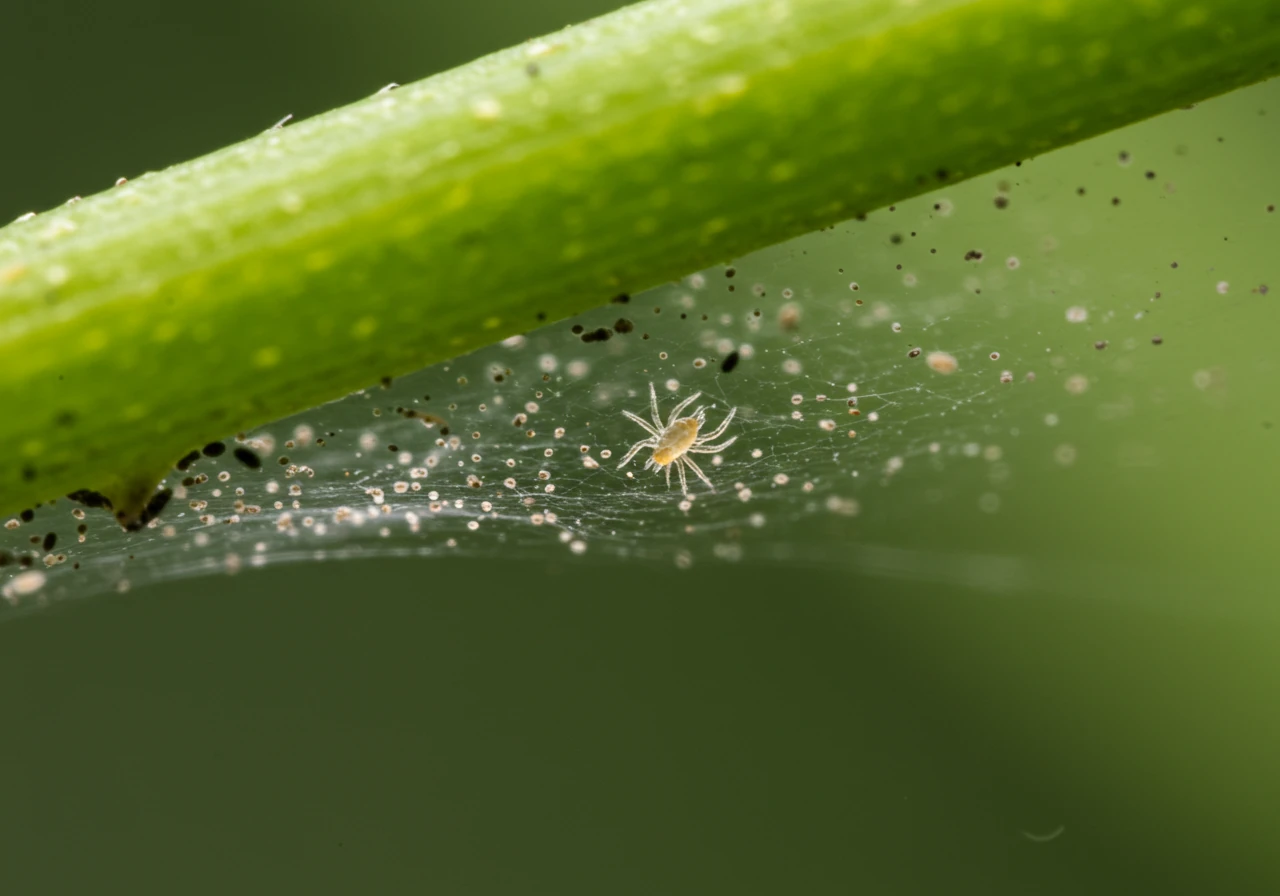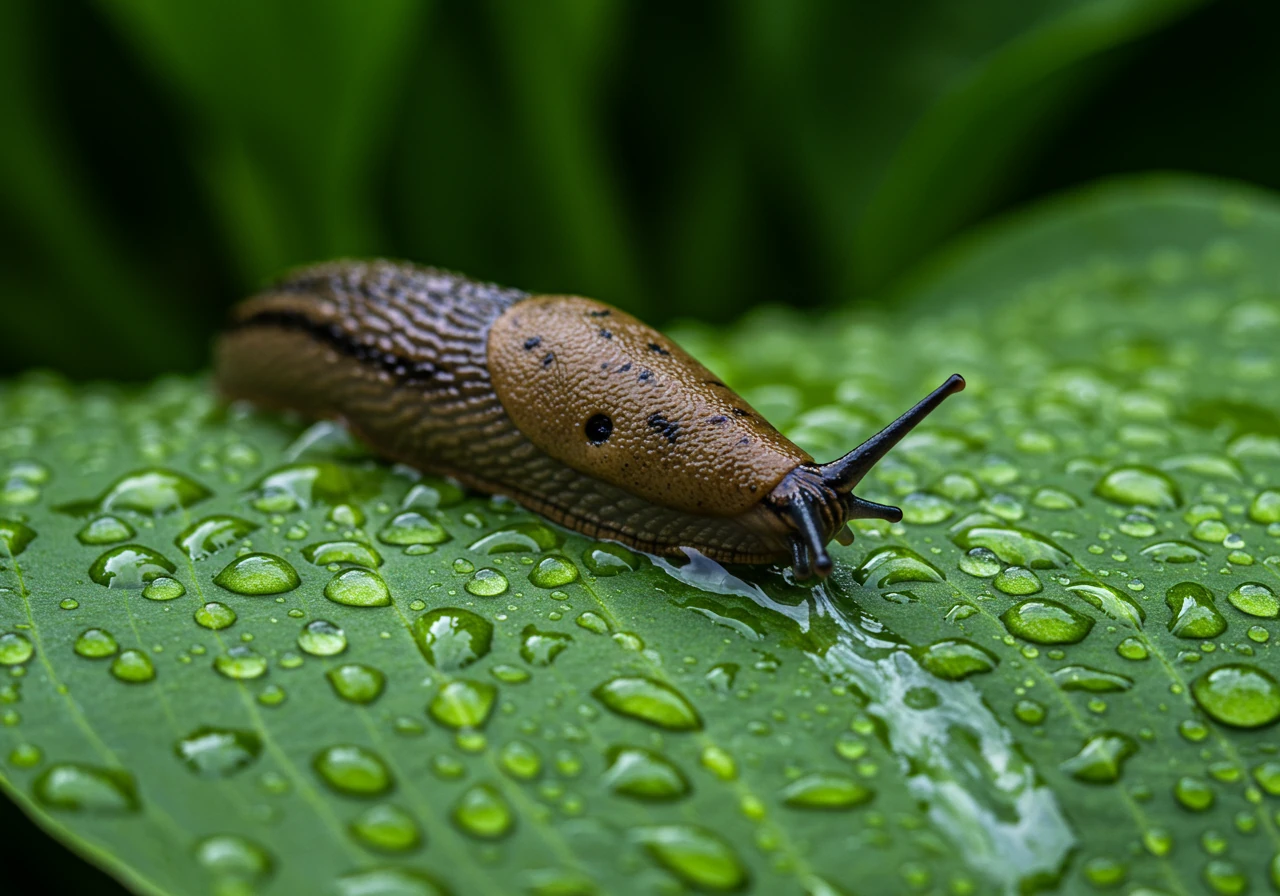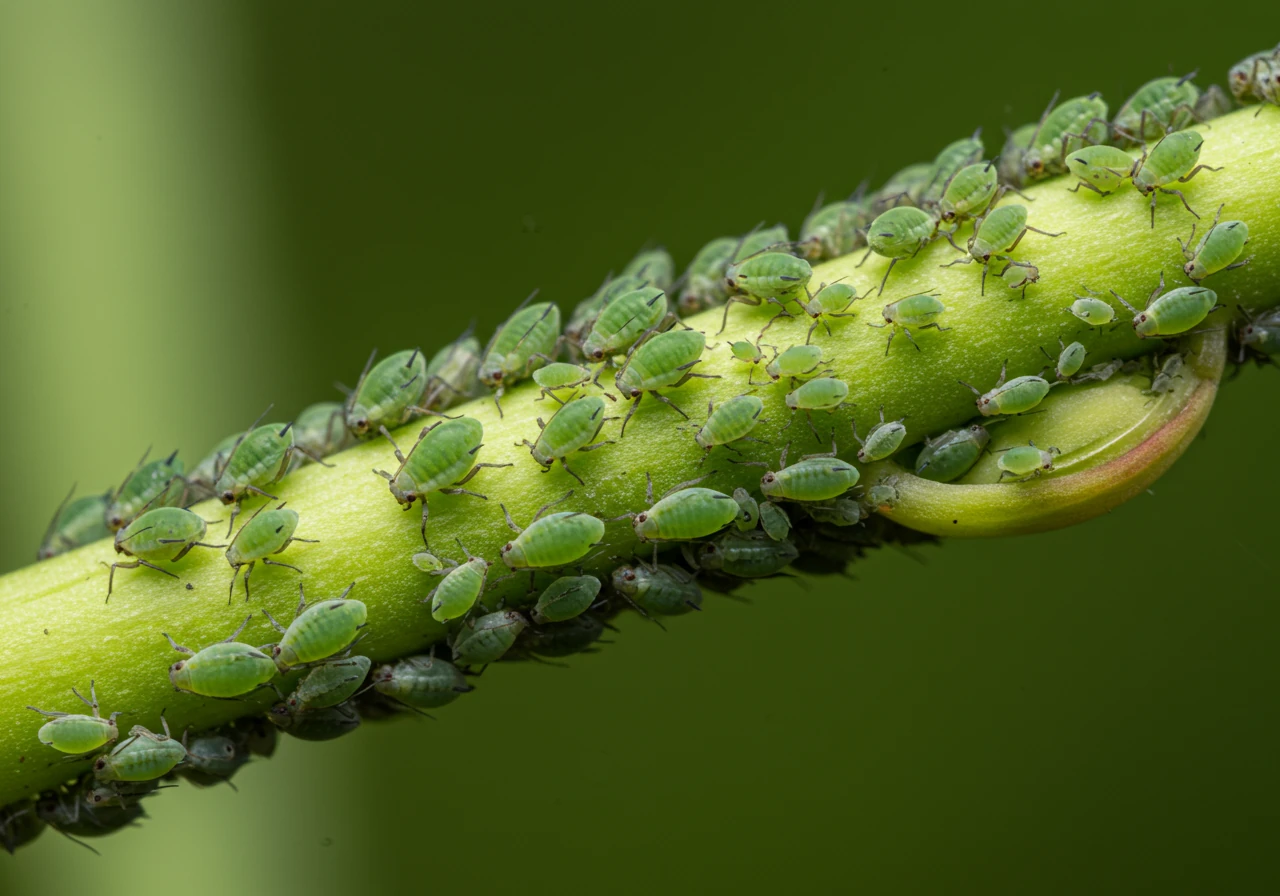Early Pest Scan in Embrun: Save Gardens Before Fall Damage
Quick Summary: Protect Your Embrun Garden This Fall
- Late summer/early fall is crucial for pest detection before winter.
- Common pests include slugs, snails, spider mites, earwigs, and boxelder bugs.
- Regular garden scouting helps catch infestations early.
- Eco-friendly methods (cleanup, hand-picking, beneficial insects) are preferred.
- Fall cleanup removes pest overwintering sites.
Seeing signs of pest trouble in your Embrun garden? Don't wait for damage! Request a Free Quote Today
Introduction: Don't Let Pests Crash Your Embrun Garden's Fall Finale!
Ah, fall in Embrun! Your garden is putting on its spectacular autumn show, isn't it? From Embrun to nearby Russell, the gardening season is shifting gears beautifully. Just as you're admiring the changing leaves and maybe planning that final bit of landscaping, some sneaky critters might be plotting to crash the party. These uninvited guests – common garden pests! – are surprisingly active in late summer and early fall. Think of them as tiny party crashers who didn't get the memo that the buffet is closing! It's crucial to spot them before they turn your stunning fall display into their personal smorgasbord. Early detection is your best defense against major damage. This is prime time for pre-winter pest patrol. But don't fret! We've got the tips you need to identify these nuisances and politely (or not so politely!) show them the door, ensuring your garden's fall finale is pest-free and fabulous, right across the Ottawa region. Need assistance with comprehensive property clean up to minimize pest habitats? We can help.
Why Late Summer Scans Matter: Catching Pests Before They Dig In for Winter

Think of late summer and early fall in your Ottawa garden as the "last call" for pests. As the days get shorter and the nights cooler, many insects and critters are frantically searching for two things: a final hearty meal and a cozy place to spend the winter. It's like they're trying to book their winter vacation rentals right now, and unfortunately, your lovely gardening beds and landscaping features look like prime real estate!
Why is scanning now so important? Well, your plants have just weathered the summer heat. Like anyone after a long, stressful period, they might be a bit worn out and more susceptible to attack. Performing a late-season check is similar in concept to the need for a Richmond Garden Vitality Check after summer's peak stress; you're assessing their health before the next big challenge – winter. Pests know a weakened plant is an easy target.
As Ottawa temperatures drop, pests like certain beetles, spider mites, and scale insects start looking for shelter. This "overwintering" means they hide away in places like soil, mulch, leaf litter, under loose bark, or even in garden debris, waiting to emerge hungry and ready to multiply come spring. Catching them now prevents a much bigger headache later. Imagine finding a few unwanted guests versus an entire colony that survived the winter! This proactive approach aligns with the principles of a Vernon Early Garden Inspection, focusing on prevention to avoid major loss. Considering professional help? Visit our Google My Business page to see reviews.
Pest pressures can even vary slightly across different areas. What's bothering gardens in Manotick might differ subtly from Greely due to local plant types or microclimates, but the need for vigilance is universal. Consistent monitoring, much like the focus on Greely Early Aphid Detection recommended for springtime issues, is key throughout the growing season, including this crucial late phase.
So, what can you do?
- Look closely: Inspect leaves (undersides too!), stems, and the soil surface around your plants.
- Know the signs: Look for chewed leaves, webs, sticky residue (honeydew), weird bumps, or the pests themselves.
- Clean up: Removing fallen leaves and garden debris eliminates potential hiding spots. This is a core part of good fall maintenance, like the services offered by a Winchester Property Cleanup Service or a Metcalf Property Cleanup Service.
Acting now is essentially performing a fall version of a Manotick Garden Health Assessment, ensuring your plants are tucked in safely for the winter. Dealing with a few stragglers now is far easier and less damaging than battling a full-blown infestation next year. These late-season scans are a vital part of overall garden care, complementing broader efforts included in Comprehensive Landscaping and Cleanup Services. Don't let pests get comfy – show them the door before winter arrives!
The Usual Suspects: Common Late-Season Garden Invaders in the Ottawa Area


Alright, let's talk about the specific troublemakers you might find lingering in your garden as the Ottawa weather cools down. Just because summer's winding down doesn't mean the pest patrol can clock out! These critters are often looking for a last meal or a cozy spot to ride out the winter, and your beautiful gardening efforts in areas like Nepean or Metcalfe can look mighty inviting. Knowing who you're up against is half the battle. For general upkeep in these areas, consider a Metcalf yard cleanup service or similar city yard cleanup service.
Here are some common late-season invaders to keep an eye out for:
- Slugs & Snails: Ah, nature's slimy little bulldozers. You know 'em, you... well, you probably don't love 'em. They are especially active on cool, damp fall evenings and nights.
- Signs: Tell-tale silvery slime trails are the classic calling card. They chew ragged, irregular holes in leaves.
- Targets: They aren't too picky but often go for tender leafy greens (lettuce, spinach), hostas, low-hanging strawberries, and seedlings.
- Tips: Look under pots, rocks, mulch, and dense groundcover during the day. Keeping the garden tidy removes hiding spots – something a focused City Garden Clean Up Service or even a Marionville Garden Clean Up Service can certainly help with by removing excess debris.
- Spider Mites: These pests are tiny – you'll likely need a magnifying glass to see the actual mites, which look like minuscule dots. They are technically arachnids, like spiders.
- Signs: Look for fine webbing on plants, especially between leaves and stems. Leaves may look stippled (covered in tiny yellow or white dots), eventually turning yellow or bronze and potentially dropping off.
- Targets: They attack a wide range of plants, including houseplants recently brought indoors, vegetables, flowers, and stressed shrubs or trees (especially evergreens). Dry fall conditions can favour them.
- Tips: Check the undersides of leaves carefully. A strong spray of water can sometimes dislodge small populations.
- Earwigs: These reddish-brown insects with the distinctive pincers at their rear end look intimidating but are mostly nuisance pests in the garden.
- Signs: They chew irregular holes in leaves and flowers, sometimes burrowing into soft fruit. Damage can resemble slug damage but without the slime trails.
- Targets: They enjoy soft plant parts – flowers like dahlias, marigolds, and zinnias are favourites, along with leafy greens and soft fruits like apricots or berries.
- Tips: They hide in dark, moist places during the day (under boards, in mulch, within damaged plant stems). Reducing clutter and potential hideaways through regular landscaping maintenance and tidiness, perhaps as part of a general Ottawa Yard Cleanup Service, can discourage them.
- Boxelder Bugs: You've likely seen these black bugs with distinct red or orange markings, especially congregating on sunny walls in the fall.
- Signs: Their main "damage" late season is their presence – large groups gathering on sunny sides of buildings, seeking warmth and entry points for winter. They can stain surfaces with their droppings.
- Targets: Primarily Boxelder trees, but also sometimes Maple and Ash. The real issue is their invasion of homes.
- Tips: Seal cracks and crevices around windows, doors, and foundations. Keeping the area around your foundation clear of leaf litter, perhaps with help from an Ottawa Property Cleanup Service or Marionville Property Cleanup Service, removes places they might gather.
- Tarnished Plant Bugs (TPB): These are small (about 1/4 inch), oval, mottled brownish bugs that move quickly when disturbed.
- Signs: Feeding damage causes distorted or stunted plant growth, yellowed spots on leaves ("stippling"), deformed flowers or buds (blasting), and scarred, puckered fruit ("cat-facing").
- Targets: A huge range! Over 300 host plants, including many vegetables (beans, potatoes, tomatoes), fruits (strawberries, raspberries), and flowers (asters, mums, dahlias).
- Tips: Control nearby weeds, as TPB feed on many common ones. They are fast flyers and hard to catch. Severe infestations might need targeted management; if you engage professional help for widespread issues, remember it's always wise to understand their service scope by reviewing their Terms and Conditions.
Keeping your property clean is a recurring theme here. Removing fallen leaves, spent vegetable plants, and other debris eliminates overwintering spots for many pests. Whether you tackle it yourself or enlist help from a local provider like a Winchester Property Cleanup Service or a broader City Property Cleanup Service, fall cleanup is crucial pest prevention for next spring! Being able to spot these common culprits is your first line of defense.
Late Season Pest Activity Levels (Ottawa Region Estimate)
| Pest | Typical Late Summer Activity (Aug) | Typical Early Fall Activity (Sep-Oct) | Primary Concern |
|---|---|---|---|
| Slugs & Snails | Moderate (especially damp weather) | High (cool, damp nights) | Feeding damage, laying eggs |
| Spider Mites | High (especially hot, dry weather) | Moderate (can persist indoors/on evergreens) | Feeding damage, overwintering |
| Earwigs | Moderate | Moderate (seeking shelter) | Nuisance, minor feeding |
| Boxelder Bugs | Low-Moderate (feeding) | High (congregating, seeking shelter) | Home invasion, staining |
| Tarnished Plant Bugs | High | Moderate (activity declines with cold) | Feeding damage, overwintering adults |
Your Garden Detective Kit: A Simple Step-by-Step Pest Scouting Guide

Alright, time to put on your detective hat! Don't worry, you don't need a trench coat, just a keen eye and a few minutes. Becoming a garden pest detective is easier than you think and super important for keeping your Ottawa gardening efforts looking great right through fall. Think of it as a friendly wellness check for your plants. Here’s how to get started:
Step 1: Gather Your Simple Sleuthing Gear
No fancy gadgets required! Your basic kit includes:
- A magnifying glass (even a simple one helps see tiny culprits)
- Your smartphone camera or a small notebook and pen (for recording clues)
- Gloves (because sometimes you find sticky or slimy stuff!)
- Maybe a few small sealable plastic bags (if you want to collect a mystery bug for later ID)
Step 2: Choose Your Moment
The best time for pest scouting is usually on a dry day with good light. Mid-morning or late afternoon often works well. It’s harder to spot pests when leaves are wet or when it’s too dark. Make it a regular part of your routine, maybe once a week or every two weeks in late summer and fall. Consistent observation is key to good Garden Maintenance.
Step 3: Divide and Conquer Your Territory
Don't try to inspect everything at once – you'll go cross-eyed! Break your landscaping down into smaller zones. Maybe Zone 1 is the foundation plantings along the front of your Barrhaven home, Zone 2 is the vegetable patch out back like you might have in Richmond, and Zone 3 is your prized flower border. Focusing on one area at a time makes it manageable.
Step 4: The Inspection Lowdown – Look High and Low!
Now for the actual detective work. Wander through your chosen zone and get up close and personal with your plants:
- Leaves: Check both sides! Many pests hide underneath. Look for holes, chew marks, yellowing, stippling (tiny dots), sticky residue (honeydew), webbing, or unusual bumps. Pay extra attention to new, tender growth.
- Stems & Buds: Inspect stems for insects, weird growths, or discoloration. Check flower buds – some pests love to munch on these before they even open.
- Soil Line: Gently poke around the base of plants. Slugs, snails, cutworms, and others hang out here. This is also a good reminder that healthy soil is less attractive to some pests; good Soil Preparation practices contribute to overall plant health.
- Check the Edges: Pests can sometimes migrate from lawns or weedy areas into garden beds. Keep an eye on the borders, especially if you've recently had work done like new Sod Installation nearby, as disturbed soil can sometimes stir things up. For more on local lawn care, consider options for lawn care solutions.
Step 5: Jot Down Your Findings (Briefly!)
You don't need to write a novel. Just simple notes help track patterns: "Small webs under rose leaves - back bed," or "Few chewed holes on hosta - Zone 1." Taking a quick photo helps too. Keeping good records helps you notice if a small issue is becoming a bigger problem. Just as we are clear about how we handle information in our Privacy Policy, keeping your own clear garden records helps you manage your green space effectively.
That's it! Regular scouting like this catches problems early before they require major intervention. If your scouting reveals lots of leaf litter or debris providing pest hideouts, remember that services like a thorough Ottawa Yard Cleanup Service or a dedicated Marionville Garden Clean Up Service can help reduce those overwintering spots significantly. Happy sleuthing!
Fighting Back Kindly: Eco-Friendly Pest Control for Ottawa Gardens
Okay, so you've spotted some unwelcome guests munching on your marigolds or setting up shop on your shrubs. Before you reach for the heavy artillery, let's talk about fighting back kindly. Eco-friendly pest control isn't just about being nice to the planet (though that's a huge plus!); it's about creating a healthier, more resilient garden in the long run for communities from Kars to Kenmore. The goal is sustainable pest management, not total annihilation – which often backfires anyway! Looking for inspiration? Check out some garden transformations achieved through thoughtful care.

The smart approach is called Integrated Pest Management, or IPM. Think of it as being a savvy garden manager rather than just a bug zapper. IPM uses a combination of common-sense practices, starting with the least disruptive methods first. It’s about understanding the pests and using targeted strategies, only escalating if absolutely necessary. For local guidance, consider resources like the Master Gardeners of Ottawa-Carleton.
Here’s how you can put IPM into practice in your Ottawa gardening efforts:
Cultural Controls: Setting the Stage for Success
This is all about creating a garden environment that naturally discourages pests.
- Choose Wisely: Select plants suited to our Ottawa climate and your specific site conditions (sun, soil). Healthy, happy plants are naturally more pest-resistant. Making informed choices during Material Selection for your garden beds is a preventative step. Find suitable plants via City of Ottawa Trees and Plants information.
- Keep it Clean: This is HUGE, especially in fall! Remove dead plants, fallen leaves, and weeds where pests love to hide and overwinter. A tidy garden is less inviting. If the task feels overwhelming, consider assistance from services like a Metcalf Yard Cleanup Service or a Marionville Yard Cleanup Service to reduce those pest hideouts.
- Smart Watering: Water plants deeply but less frequently, and preferably in the morning, so leaves dry quickly. Wet foliage overnight can invite fungal diseases and some pests.
- Crop Rotation: In veggie gardens (even small ones in Osgoode!), avoid planting the same things in the exact same spot year after year. This helps break pest and disease cycles.
Physical & Mechanical Controls: Hands-On Solutions
These are direct, physical ways to remove or block pests.
- Hand-Picking: Yep, sometimes the best tool is your own (gloved) hands! Pluck off slugs, caterpillars, or larger beetles and drop them into soapy water. Gross, maybe, but effective and targeted.
- Water Jet: A strong spray from the hose can dislodge aphids and spider mites. Simple, free, and surprisingly effective for small infestations.
- Barriers: Use row covers over vulnerable seedlings to keep flying insects off. Place copper tape around pots or beds to deter slugs and snails. Install deer fencing if needed – a larger task where getting clear expectations, perhaps through reviewing Estimate Feedback if hiring help, is wise.
Biological Controls: Calling in the Good Guys
Nature has its own pest control team! Encourage beneficial insects like ladybugs (aphid eaters!), lacewings, and predatory wasps.
- Plant Attractants: Include flowers like dill, fennel, yarrow, cosmos, and alyssum in your landscaping to provide food and shelter for these helpful critters. This enhances biodiversity, a core principle of good garden maintenance.
Low-Impact Sprays (Use Sparingly & Responsibly)
If other methods aren't enough, consider targeted organic options last.
- Insecticidal Soap: Effective against soft-bodied insects like aphids and mites. Must directly contact the pest.
- Horticultural Oil (Dormant/Summer): Can smother overwintering insects and eggs (dormant oil) or active pests (summer oil).
- Neem Oil: Disrupts insect feeding and growth.
- Important: Always read and follow label directions precisely. Spray in the early morning or evening when pollinators are less active. Spot-treat only affected areas. Remember, even organic sprays can harm beneficial insects if used improperly. Being clear and responsible in our actions is key, just as we aim for transparency outlined in our Clear Privacy Policy. Check Ontario government resources like OMAFRA's IPM information for guidance.
Relative Late-Season Pest Activity (Conceptual)
Mini Seasonal Pest Check Timeline
Spring Wake-Up (April-May)
Check for overwintering pests emerging, early aphid colonies (like noted in Greely early detection), tent caterpillars.
Summer Peak (June-July)
Monitor for beetles (Japanese, cucumber), spider mites in hot/dry weather, slugs. Assess overall plant health as discussed for Richmond garden checks.
Late Summer/Fall Prep (Aug-Oct)
Watch for slugs/snails again, boxelder bugs looking for shelter, check plant roots/soil when cleaning up beds. Perform thorough inspection similar to a Vernon early inspection.
Winter Prep (Oct-Nov)
Final cleanup of debris vital. Remove potential hiding spots. Services like Ottawa property cleanup can be crucial here.
By adopting these kinder, smarter pest control methods, you're not just managing pests; you're nurturing a healthier, more vibrant garden ecosystem. The results can be truly stunning, contributing to beautiful garden Transformations you can be proud of. Happy (eco-friendly) gardening!
Top 5 Quick Tips for a Pest-Resistant Fall Garden
- Tidy Up Tribe: Banish bug motels! Rake leaves and remove dead plants. Good gardening hygiene is key. An Ottawa Garden Clean Up Service helps tackle big jobs, and similar services are available like the Metcalf Garden Clean Up Service.
- Healthy Plants = Fewer Pests: Strong plants fight back! Water properly and consider fall feeding. Consistent City Garden Maintenance Service keeps them robust.
- Mind the Lawn Edge: Keep grass trimmed near beds. Pests migrate from messy lawns. Good Lawn Care stops sneaky invaders heading for your Nepean garden.
- Seal the Deal: Block winter hideouts. Check foundations/window seals to stop pests sneaking inside. Prevention leads to beautiful Garden Transformations.
- Ask for Backup: Feeling swamped by pests? If your efforts aren't enough, don't hesitate to Contact Us for advice and solutions for your Ottawa property.
Your Ottawa & Embrun Pest Questions Answered (FAQ)
Don't let the quiet fool you! While some pests slow down, others are actively seeking shelter for winter *in* your garden beds or soil. Slugs love the cool dampness, and tiny critters like spider mites or overwintering beetle larvae hide in leaf litter. Ignoring them now means a bigger headache come spring. Think of fall pest patrol as smart future-proofing for your gardening efforts.
Cleanliness is key! Removing fallen leaves, dead plant matter, and weeds eliminates prime overwintering spots for many pests and diseases. It's the foundation of good fall landscaping maintenance. If you have a lot of debris, considering help like a Metcalf Property Cleanup Service can make a huge difference in reducing potential pest hideouts before winter sets in.
Ah, likely Boxelder bugs or possibly Asian Lady Beetles! As temperatures drop, they seek warmth and shelter, often gathering on sunny south or west-facing walls. They're looking for cracks to sneak inside for the winter. Sealing entry points around windows and doors is your best defense. Learn more about our approach to holistic property care by checking out the details about Our Company and Values.
It's a double-edged sword! Mulch is great for soil health and weed suppression, key parts of effective Mulching and Edging Services. However, *thick* layers, especially right against plant stems, *can* provide hiding spots for slugs, snails, and earwigs. Keep mulch depth reasonable (2-3 inches) and pull it back slightly from plant crowns to minimize pest shelters.
Absolutely! While no plant is a magic forcefield, incorporating strong-scented herbs like mint (best in pots!), lavender, rosemary, or basil can deter some pests. Marigolds are classic deterrents for nematodes and some insects. Flowers like cosmos and alyssum attract beneficial insects that prey on pests. It’s a great eco-friendly gardening strategy!
If you've tried eco-friendly methods (cleanup, water sprays, hand-picking) and are still facing widespread damage, or if you're dealing with a persistent infestation you can't identify, it's wise to seek expert advice. Professionals can offer targeted solutions. If you reach out to us for an assessment, you'll find confirmation and next steps on our Contact Confirmation Page after submitting your request.
Conclusion: Secure Your Garden's Health Before the Snow Flies
Alright, let's bring it home! As the gorgeous fall colours peak across Ottawa and the first hints of frost nip the air in places like Embrun and Greely, remember this: a little pest patrol now is your secret weapon for a spectacular spring garden. Think of this late-season scan as tucking your plants in safely before the snow flies. Catching those lingering critters – the ones looking for a cozy winter hideout – prevents a population explosion next year and gives your gardening efforts a huge head start. It's all about ensuring your precious landscaping wakes up healthy and ready to thrive!
We know fall can be a whirlwind. If adding 'pest detective' to your to-do list feels like one task too many, we've got your back. Let our team give your garden a professional once-over and ensure it's buttoned up tight against unwanted guests. Ready for peace of mind this winter? Book your fall garden health check today! You can also easily request a free quote online for our comprehensive fall cleanup and pest prevention services. Secure your garden's future now, then sit back and enjoy the crisp autumn beauty!

